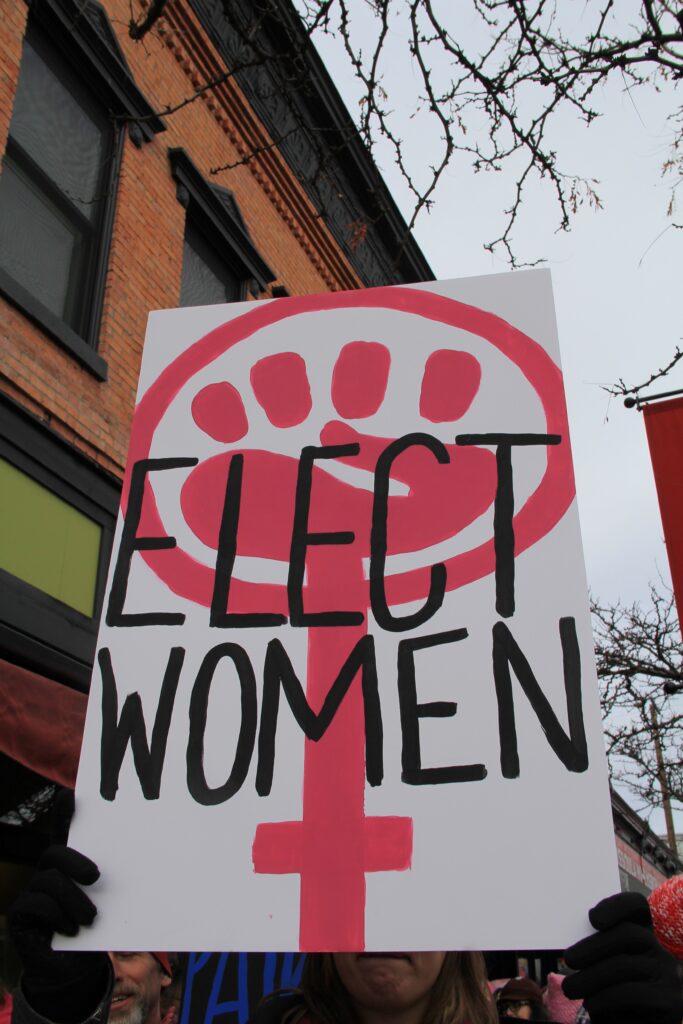
As Canada approaches another federal election, gender parity is more than ever at the forefront of voters’ and politicians’ minds, experts say.
“The lived experiences of women, of Black women, of Black Canadians, of Indigenous women, Indigenous people are not at the decision making tables,” said Tracey Raney, a politics professor at Toronto Metropolitan University. “So the public policies that are being created are not going to be as representative of the Canadian population.”
Raney specializes in women’s representation in politics and pointed to the fact that only 30 per cent of women were elected to the House of Commons in the 2021 federal election—104 seats out of the 335 held and the 338 total seats. According to Statistics Canada, women made up 50.9 per cent of the Canadian population in 2022.
“Today, we’re ranked 69th in the world according to international statistics for the percentages of women in our Parliament,” she said.
Listen to the whole story here:
Lived experiences
Though the statistics seem daunting, the real-life experiences of female politicians are far more complex.
“Since I became leader of the Green Party in 2006 no other major political party in this country has had a woman leader. I think that’s appalling,” Elizabeth May, co-leader of the Green Party of Canada and member of Parliament (MP) for Saanich Gulf Islands, told OTR in an interview.
She added that she deals with misogyny and sexism in the workplace.
“I know that I get less coverage because I’m a woman, less respect because I’m a woman,” May said. “Being a woman in politics is empirically more difficult than being a man in politics in Canada.”
May’s experiences are not uncommon. On March 8, Liberal MP Pam Damoff released a media statement about the disrespect she faced in the role due to her gender, which led to her decision to leave politics.
“I have no regrets about running for office … the real issue is retention. Whether you’re on a construction site, in journalism, or in politics, we make better decisions when diverse voices are around the table,” Damoff wrote in the statement.
May added that the battle for gender parity is years-long and has been demonstrated in a variety of ways.
“In 2008, Stéphane Dion decreed that the Liberal Party would have 50 per cent women candidates. What happened was the women candidates were put in the unwinnable ridings,” she said.
However, May suggested solutions in the fight for gender parity, including care support for parents in politics. She also pointed to a private member’s bill that was put forth by former Burnaby South NDP MP Kennedy Stewart that would encourage parties to have 50 per cent female candidates. Bill C-237 suggested that for every deficit in female candidates, parties would get less money back in rebates from Elections Canada.
Voter Turnout
Not only has representation been lacking, but the voter turnout of women-identifying voters has also decreased over time.
According to Elections Canada’s Voter Turnout Database, in the 2021 federal election, only 63.8 per cent of women took to the polls.
“While political change can feel slow, elections are one of the most powerful tools for shaping the future and political parties pay attention to those who vote,” Equal Voice, a registered charity fighting for gender parity in Canadian politics, told OTR in an emailed statement.
May also stressed the importance of voting, stating that she became the first elected Green MP in Canada because her riding had the highest voter turnout rate in the country.
“Nothing is predetermined. Elections can change everything, and if people in large numbers, particularly marginalized people, particularly women, particularly people of colour and young people, if we all turn out to vote and don’t vote based on fear…it will change everything,” she said.
When asked whether or not women could be a swing vote in the upcoming federal election, Raney said “When we look at the public opinion polling right now on vote intentions, we see that women are more likely to vote NDP than men are, and that men are more likely to vote conservative than women.”
The impacts
Raney pointed to some of the ways in which women are disproportionately affected by a lack of representation — including the gender pay gap and the Calls to Justice for Missing and Murdered Indigenous Women.
“I’m going to be watching and paying close attention to questions around ending violence against women and girls,” she said. “There were 231 Calls to Justice [that] have not moved forward very quickly. We’ve only seen two of those Calls to Justice be fully completed or fully implemented today.”
Raney added that many women voters are troubled due to what’s going on just south of the border, including abortion bans and cuts to DEI programs.
“I think there’s going to be real concern [in] Canada, on whether those same regressive measures might potentially be imposed in Canada if it is the case that a right-wing party is put into power,” she said.
Despite this, Raney says she applauds women who are willing to run for political positions in the current Canadian environment.
“Any woman who is elected in this particular moment in time that we’re in, which is extremely challenging, where we know that decision makers are going to have a lot on their plates in dealing with global politics, our relationship with the United States, economic issues, sovereignty issues, is really commendable, especially in a very polarized sort of environment,” she said.
Reporter, OTR, W2025.

